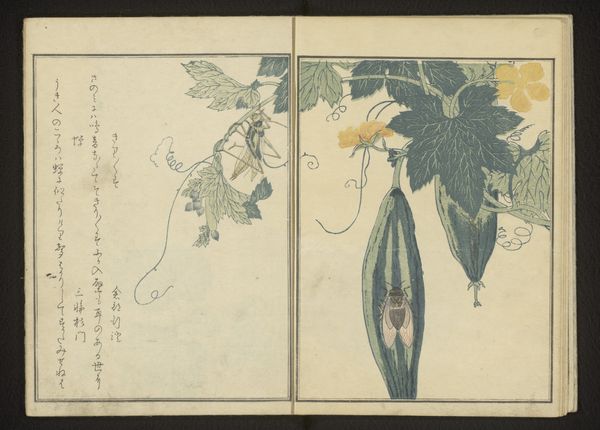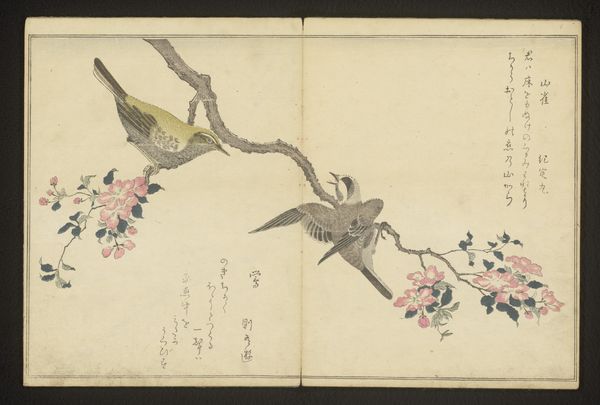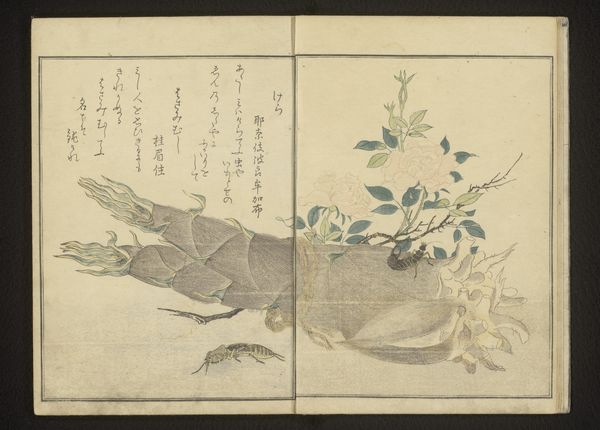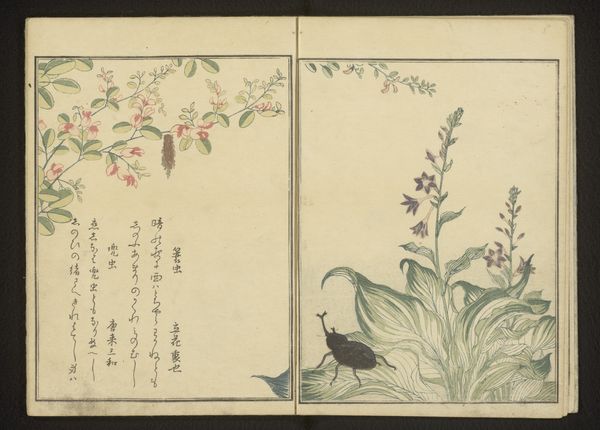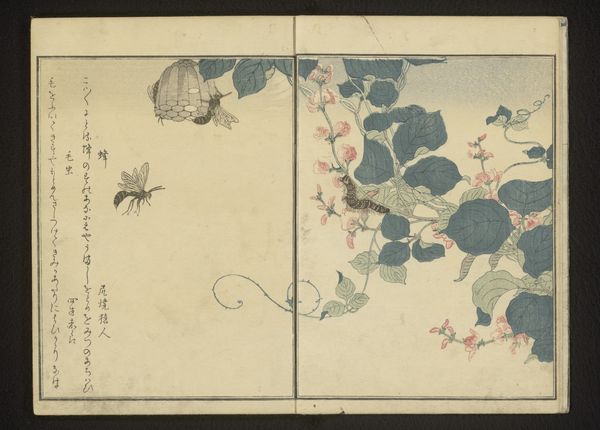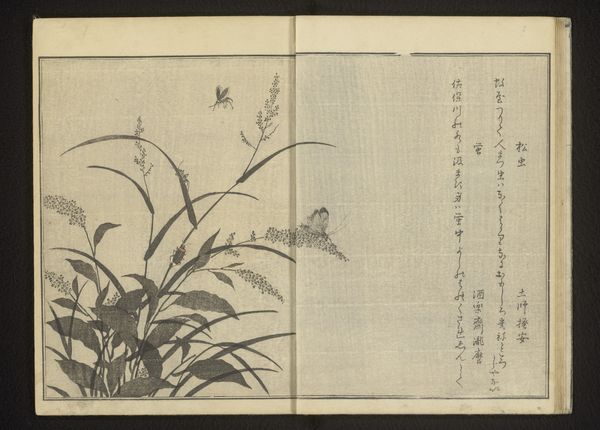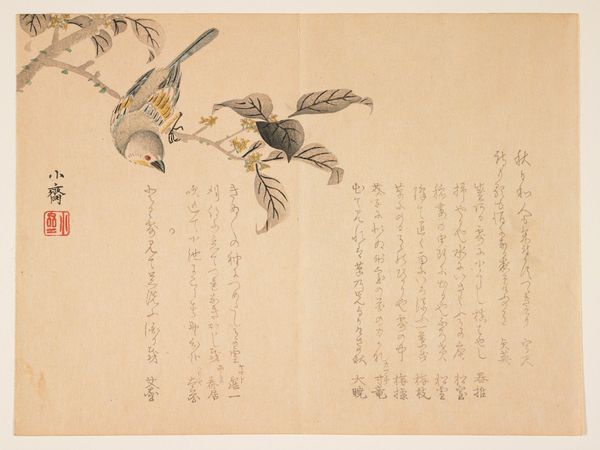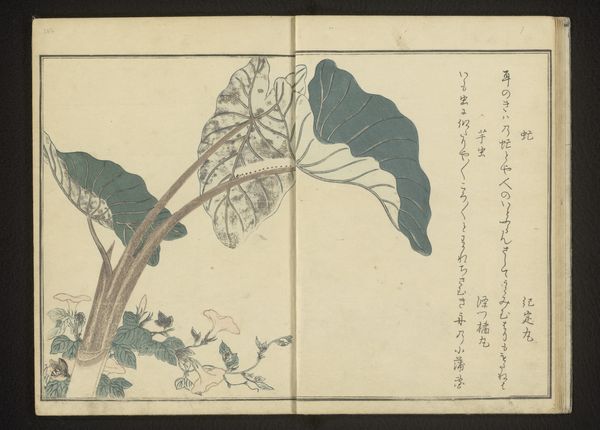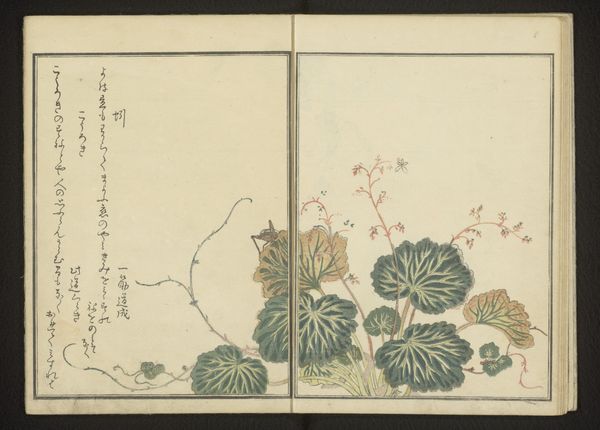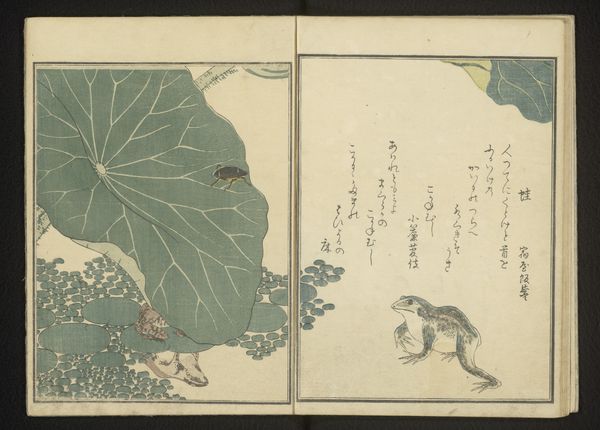
print, intaglio, woodcut
# print
#
intaglio
#
asian-art
#
ukiyo-e
#
woodcut
#
naturalism
Dimensions: height 250 mm, width 180 mm
Copyright: Rijks Museum: Open Domain
Kitagawa Utamaro created this woodblock print, "Cicada and Spider on Corn," likely in the late 18th century, a period of relative peace and economic growth in Japan under the Tokugawa Shogunate. The natural world takes center stage here, a theme very popular in Japanese art of the Edo period. Yet, the presence of calligraphy also invites us to consider the cultural elite of the era. The print is from a book, suggesting a cultivated, literate audience. Corn, a relatively new crop in Japan at the time, might also symbolize prosperity and abundance. What's striking is Utamaro's ability to elevate these seemingly minor creatures and everyday objects to objects of artistic contemplation. The book tradition from which this print comes has roots in both popular culture and more elite artistic circles. This is no simple illustration, but a sophisticated cultural artifact. For those wanting to delve deeper, studying Edo-period literature, agricultural practices, and the history of Japanese printmaking would be invaluable.
Comments
No comments
Be the first to comment and join the conversation on the ultimate creative platform.
